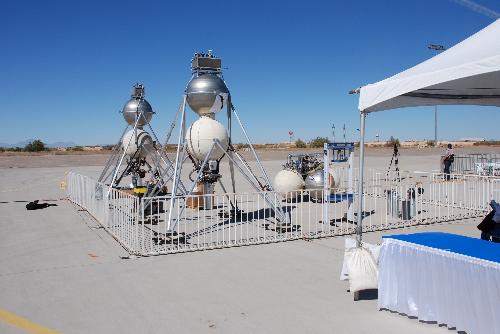36 feet tall and 1,600 lbs
YouTube link....
Cool
He needs to take that pup out west to a salt flat and do a multi-stage launch.
THAT, ladies and gentlemen, would be way beyond cool.
YouTube link....
Cool

He needs to take that pup out west to a salt flat and do a multi-stage launch.
THAT, ladies and gentlemen, would be way beyond cool.







 , but they are dead serious and could be launching people a lot sooner than more publicised outfits.
, but they are dead serious and could be launching people a lot sooner than more publicised outfits. 


Comment